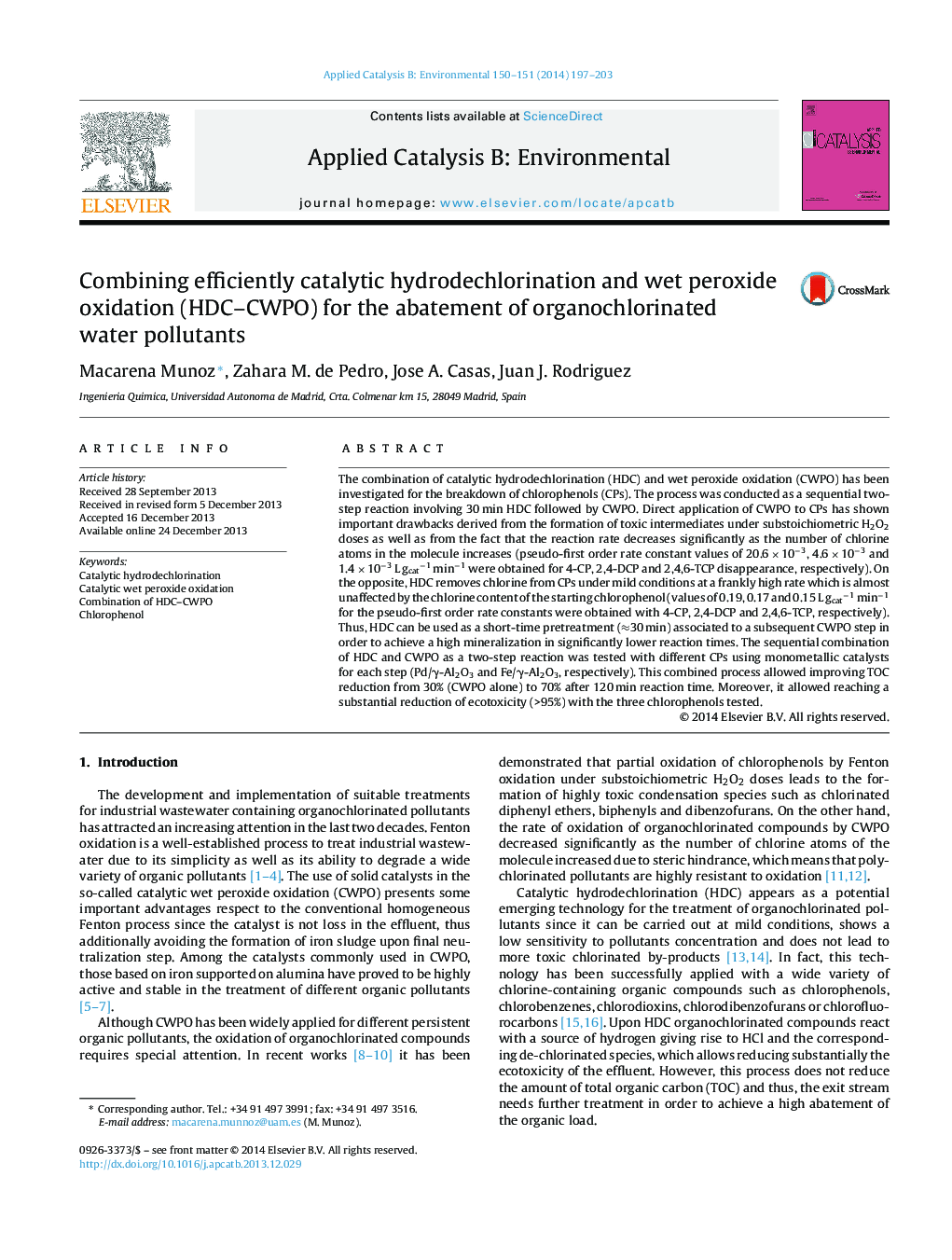| Article ID | Journal | Published Year | Pages | File Type |
|---|---|---|---|---|
| 45924 | Applied Catalysis B: Environmental | 2014 | 7 Pages |
•The two-step reaction (HDC–CWPO) represents an efficient solution for chlorophenols breakdown.•A short-time HDC step before CWPO improves the rate of mineralization.•Complete dechlorination of chlorophenols and a high mineralization (80%) was reached.•The effluents obtained upon HDC–CWPO process presented negligible ecotoxicity values (<0.5 TU).•Both HDC (Pd/γ-Al2O3) and CWPO (Fe/γ-Al2O3) catalysts showed a highly stable performance.
The combination of catalytic hydrodechlorination (HDC) and wet peroxide oxidation (CWPO) has been investigated for the breakdown of chlorophenols (CPs). The process was conducted as a sequential two-step reaction involving 30 min HDC followed by CWPO. Direct application of CWPO to CPs has shown important drawbacks derived from the formation of toxic intermediates under substoichiometric H2O2 doses as well as from the fact that the reaction rate decreases significantly as the number of chlorine atoms in the molecule increases (pseudo-first order rate constant values of 20.6 × 10−3, 4.6 × 10−3 and 1.4 × 10−3 L gcat−1 min−1 were obtained for 4-CP, 2,4-DCP and 2,4,6-TCP disappearance, respectively). On the opposite, HDC removes chlorine from CPs under mild conditions at a frankly high rate which is almost unaffected by the chlorine content of the starting chlorophenol (values of 0.19, 0.17 and 0.15 L gcat−1 min−1 for the pseudo-first order rate constants were obtained with 4-CP, 2,4-DCP and 2,4,6-TCP, respectively). Thus, HDC can be used as a short-time pretreatment (≈30 min) associated to a subsequent CWPO step in order to achieve a high mineralization in significantly lower reaction times. The sequential combination of HDC and CWPO as a two-step reaction was tested with different CPs using monometallic catalysts for each step (Pd/γ-Al2O3 and Fe/γ-Al2O3, respectively). This combined process allowed improving TOC reduction from 30% (CWPO alone) to 70% after 120 min reaction time. Moreover, it allowed reaching a substantial reduction of ecotoxicity (>95%) with the three chlorophenols tested.
Graphical abstractFigure optionsDownload full-size imageDownload as PowerPoint slide
